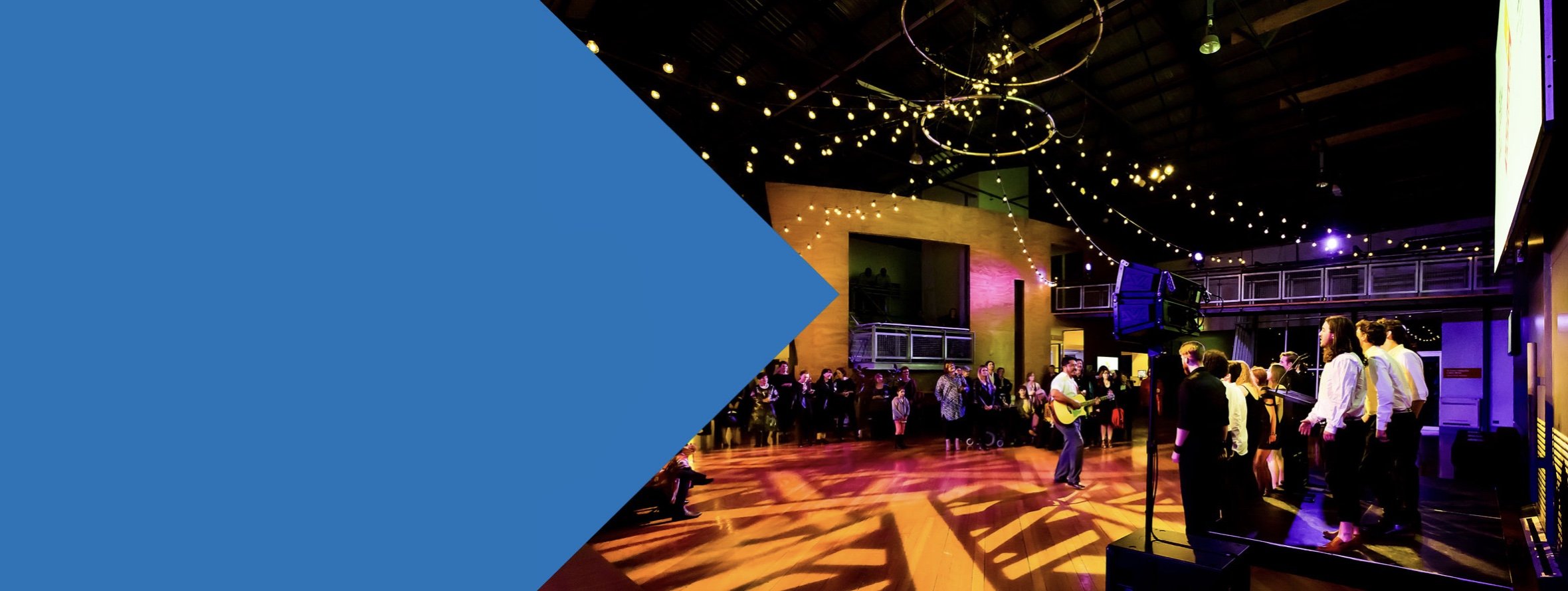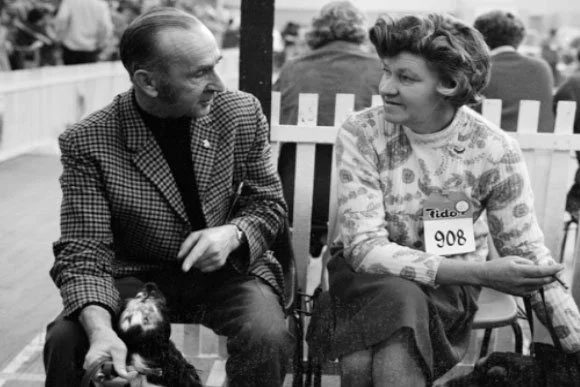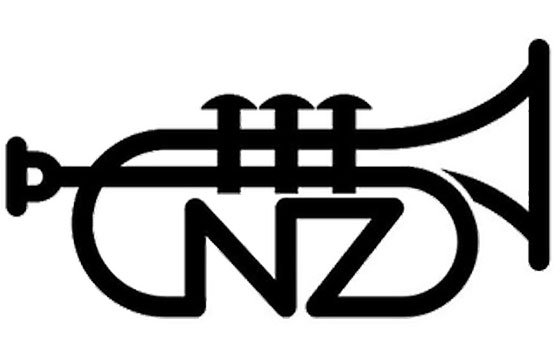
ABOUT US
Te Whaea is New Zealand’s National Dance and Drama Centre, home to Toi Whakaari: New Zealand Drama School and New Zealand School of Dance
Te Whaea is a vibrant tertiary campus providing a nurturing environment for generations of New Zealanders to strive for excellence in the performing arts. It is also a high performance community hub that is a vital part of New Zealand's creative and cultural capital.
Spaces at Te Whaea feature six-metre-high ceilings, fantastic natural light, and sprung floors. Hundreds of Wellingtonians take part in a myriad of cultural and sporting pursuits here every week. They include dancers of all genres, through to martial arts enthusiasts, classical musicians and more. Each year Te Whaea welcomes over 60 community groups whose members meet, rehearse and perform in its studios and theatres that are well suited to their various needs.
Te Whaea also hosts corporate events and has spaces suitable both for meetings and conferences.
As a landmark situated at the southern end of Wellington's creative corridor, it is a building that has been well known to generations of Wellingtonians in its changing guises over the years.
Te Whaea's wider complex now includes facilities such as The Circus Hub, Capital Gym Sports, Wellington Indoor Sports, Tāwhiri and Te Whaea Artificial Turf.
Te Whaea is a charitable trust working closely with the Wellington City Council to support a shared commitment to community and world-class arts and culture in the city.

25th Anniversary Celebrations
This year we are celebrating 25 years of Te Whaea!
Read the section below for some interesting information about Te Whaea’s history!
Our history
Te Whaea is a refurbished exhibition and show building. It was originally built in 1929 by the Wellington Show Association to hold Trade Fairs and some world exhibitions. It is governed under special legislation called the Wellington City Exhibition Grounds Act 1959 that enables the Wellington City Corporation to lease certain portions. The building fell into disrepair when the Show Association was unable to maintain its upkeep and was largely regarded as an eyesore.
Then came the disastrous Sesquicentennial celebrations in 1990 designed to mark the 150th anniversary of the 1840 signing of the Treaty of Waitangi. The event was considered a spectacular commercial and administrative failure, and has subsequently become an icon of corporate mismanagement within New Zealand popular culture.
But some good came out of the disaster for Te Whaea. In the late 90s, the search for a larger space became critical for the New Zealand School of Dance and New Zealand Drama School who had both outgrown their buildings. The number of students had grown after Toi Whakaari (the renamed New Zealand Drama School) introduced a technical production course and expanded its acting programme into a three year degree. Not only were there student actors to accommodate, but budding directors, designers, technicians, stage managers and costumiers.
Many supporters
An idea developed to bring the Drama School and the School of Dance together in a ‘National Performing Arts Centre’. Several possible alternatives for a building were explored, including a well advanced plan to build a rooftop centre on top of the old James Smith building. That plan failed when it became clear the department store building had structural problems.
And then out of the financial hole that was the Sesquicentennial Celebration, came the bright idea to transform the Wellington Show Buildings into Te Whaea: the National Dance and Drama Centre. The building would house 9 dance and drama studios, a 200 seat theatre, a stage production facility and a full arts library. There were doubts that the Schools would be able to afford the rental and operational cost of such a large building, so it was decided the remainder of the sprawling complex would remain an indoor sports centre paying commercial rent to supplement Te Whaea's budget.
The plan for a National Performing Arts Centre – was enhanced by the support of Wellington Mayor Mark Blumsky. The budget was $5 million, with $1.6 million coming from the Lotteries Grants Board, and $1.9 M from the Ministry of Education, well short of the $5 million price tag to refurbish the dilapidated show buildings. $25 thousand dollars came from the Todd Foundation towards a new dance studio and Kiri Te Kanawa came on board as patron of both Toi Whakaari and NZSD. Wellington City Council agreed to act as guarantor for the $1 million bridging loan required to go ahead. Brinkmanship was needed to get final approval from the Ministry of Education and the Minister Wyatt Creech lent his support.
Refurbishment of Show Buildings
June 1997 the Refurbishment of Wellington Show Buildings began, with contractors, Mainzeal. The interior of the ugly old building was transformed, the high roofline allowing for attractive spaces, including a light airy foyer at the front and walkways to connect the glass fronted studios. All the dance studios and the main Te Whaea Theatre were fitted with sprung floors - a necessity to protect young performer’s limbs. There were some pleasant surprises amid all the hard work, when timber flooring, including parquet, was discovered under the tatty old carpet. In 1997 with a budget of $5million but only $4million raised, the two schools decided to go ahead and move in despite not having enough money to complete the upgrade, staff mucking in to paint their own offices and studios rather than wait on more fundraising.
On the 26th of June 1998 – The Whaea, the National Dance and Drama Centre was formally opened as home to New Zealand's two national schools of drama and dance. It was the first time either school had purpose built facilities.
In 1997 Annie Ruth, a former Toi Whakaari graduate, became Director and the acting course became a three-year Bachelor of Performing Arts (Acting) degree, and in 1998 Garry Trinder was appointed Director NZSD where he still remains.
-

Our Story
A high-performance cultural and sporting hub
-

Our History
Find out about Te Whaea’s rich history
-

A visual history
Take a look through Te Whaea’s history in Wellington
-

Who uses our facilities?
More than 15,000 people visit Te Whaea each year

OUR STORY
Te Whaea was established over 20 years ago to ensure Toi Whakaari: New Zealand Drama School and New Zealand School of Dance would flourish in their shared purpose built premises.
Te Whaea – meaning The Mother in Te Reo Maori – is a high-performance cultural and sporting hub that welcomes everyone from the community, and facilitates world-class creative connections.
Spaces at Te Whaea feature six-metre-high ceilings, fantastic natural light, sprung floors and great As a vibrant and welcoming tertiary campus, at Te Whaea you’ll rub shoulders with professional actors, dancers, directors, producers, designers, costumiers, and more – people with a passion for excellence in the arts.
Our facilities include fantastic natural light, sprung floors, mirrors, excellent acoustics, six-metre-high ceilings and a wide variety of spaces for every type of performance, meeting or event.
Just ten minutes from Wellington’s CBD, we have over 200 car parks on-site and a bus stop right outside our doors.

OUR HISTORY
Te Whaea has a rich history. The site was originally set up as showgrounds in 1927 and was used as army barracks during WWII.
In the beginning
Older Wellingtonians will remember the complex as the Wellington Show Buildings having attended festivals, trade fairs and circus shows prior to Te Whaea’s inception.
The Wellington Winter Show Association was formed in 1924 with businessman RH Nimmo as Chairman. The Association aimed to build an exhibition space for trade fair and entertainment events. The site – within the Wellington Town Belt – was set aside for non-commercial use, and has always been used for recreational, educational and cultural purposes.
Construction on the John St site was completed in 1929. The Governor General, Sir Charles Fergusson, opened it in September of that year. In those days the structure was a single large building, which is still substantially the one that faces the road, and three long buildings running south from the back of the block.
Fond memories
For more than fifty years the annual Winter Show became a featured event for the whole region. Special trains ran from the Wairarapa, Taihape and Palmerston North.
Every Wellington child from that time can remember the excitement of the ferris wheel, the side shows, the ghost train and the dodgems. The building was crammed with trade exhibits and information stalls displaying the latest in every commodity.
From the 1980s onward
In the eighties new stadiums were built – the Madgwick Stadium and the one which now houses Wellington Indoor Cricket and Indoor Basketball Association activities. The Marshall Lounge has been host to many meetings, notably the regular Wellington South Rotary lunches.
Prior to the building of the TSB Arena on the waterfront, this was also Wellington’s main indoor music venue and featured performances from U2, Tina Turner, Cliff Richard and Radiohead.
Te Whaea is born
Te Whaea was opened in 1998 by the Governor-General, The Right Reverend Sir Paul Reeves, having been purpose-built as home to New Zealand's two national schools of drama and dance. Te Whaea's twentieth anniversary was celebrated in 2018.

WHO USES OUR FACILITIES?
Te Whaea is Wellington’s high-performance cultural and sporting hub.






























